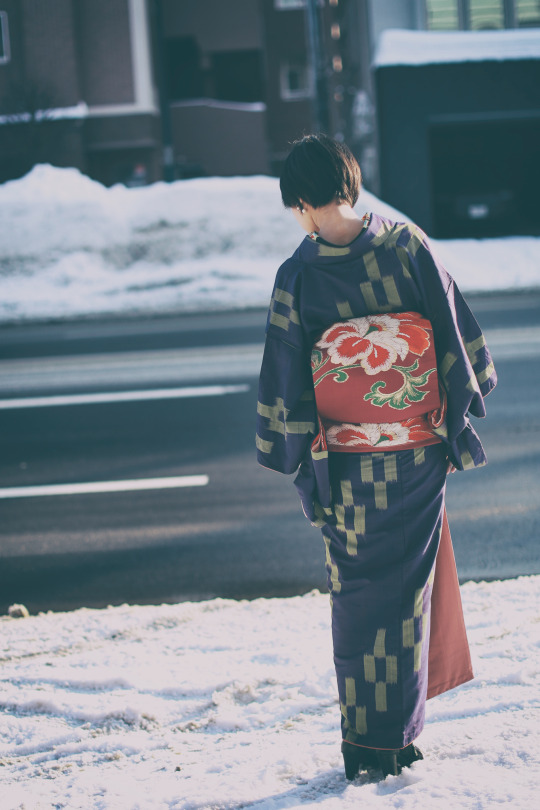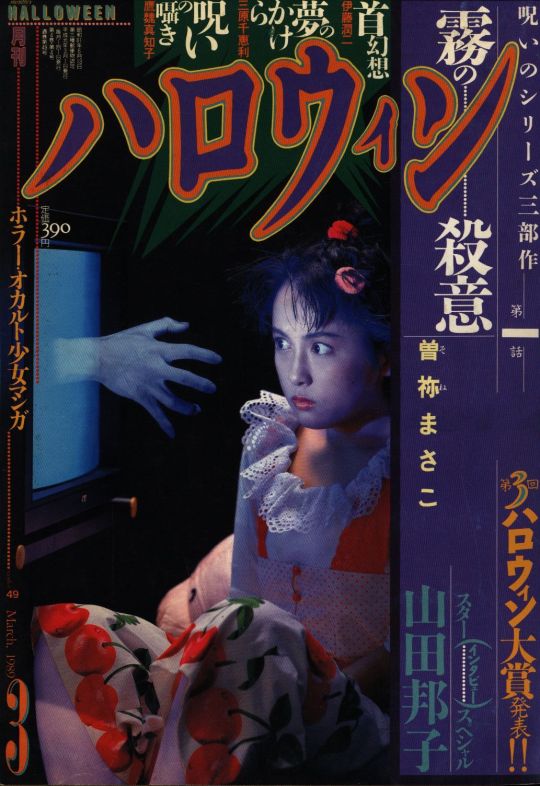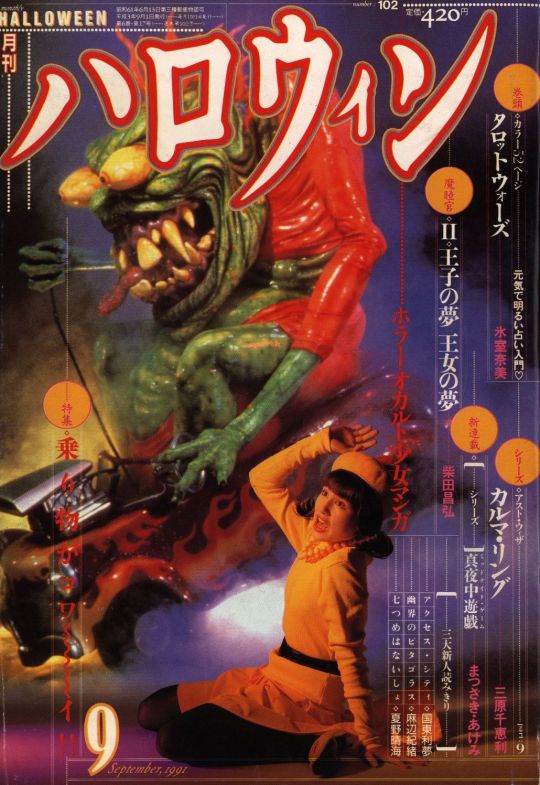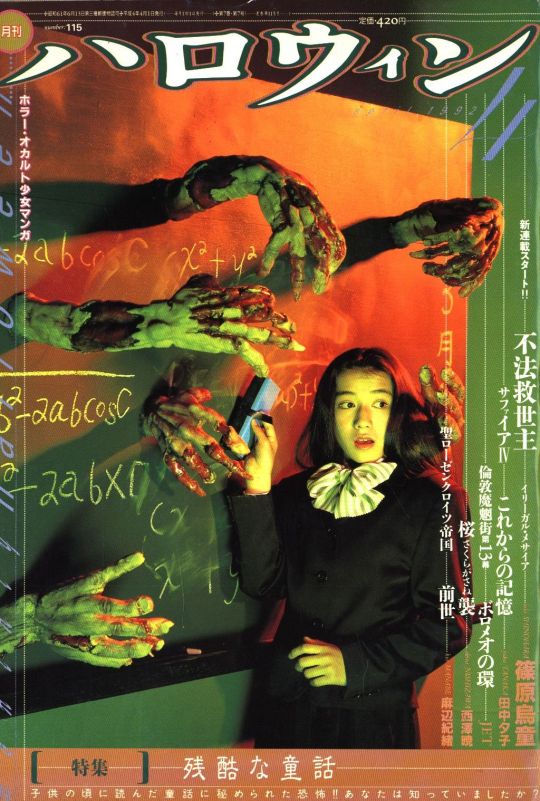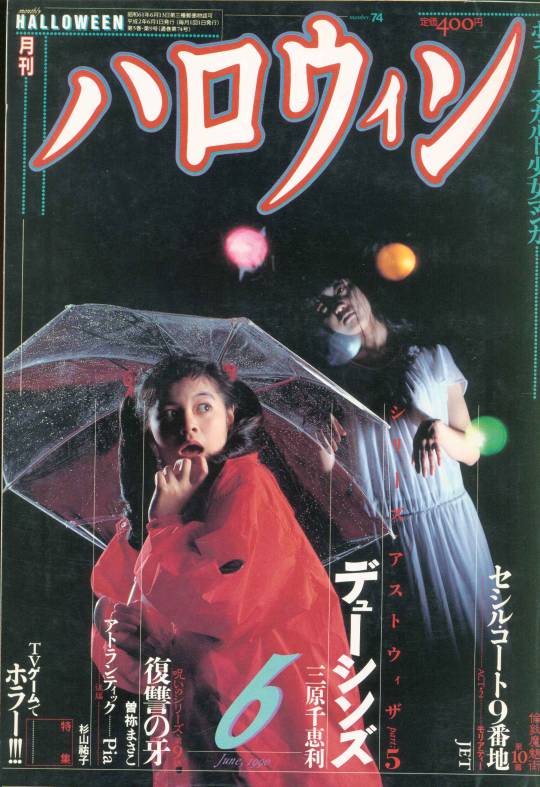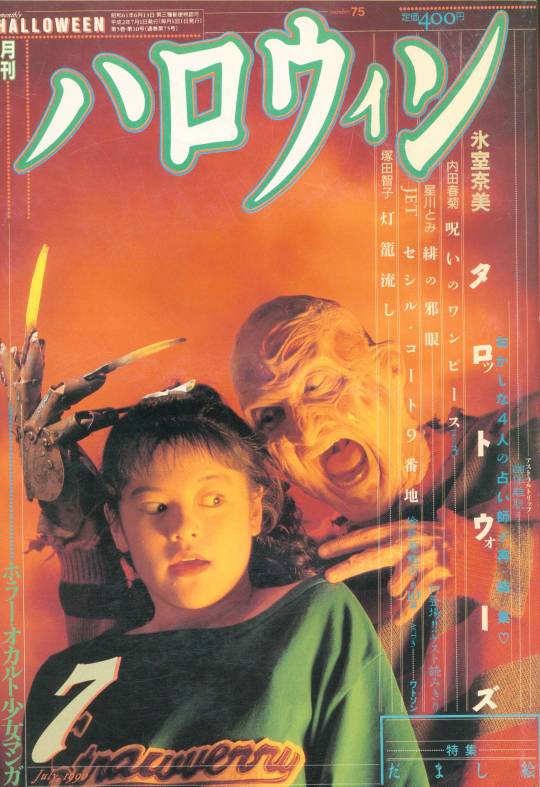Text


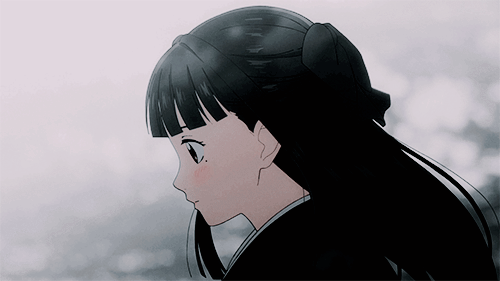



"Mizuki-sama, please help me."
Kitaro Tanjou: Gegege no Nazo - Sayo Ryuuga (Black Kimono)
#gggnk#once again i want to say how much i like this drawing style and for this movie in particular#huge improvement over the 2018 series
15 notes
·
View notes
Note
I've been trying to write something about the Meiji era with a young woman who (EXTREMELY anachronistically I know) is a note-taker in a court of law. I cannot for the life of me figure out what a woman would wear in that situation. What are your thoughts?
Hi! As you said, the situation you describe is quite an anachronism ^^; I am not familiar with Meiji law system, but I highly doubt a woman, especially a young one, who'd have been allowed in such official position (TBH, I am not even sure "court" as you envisage it was truly a thing before very late Meiji/Taisho).
With that said, it depends of the exact time + the means of your character;
in early Meiji, go for kimono without a doubt, more or less fancy is up to you but court would be quite a formal setting.
In late Meiji, you can get a bit more leeway and add Westernized elements (but please note that full Western dress was only a thing for rich women). If you go a tad informal, go for the trademark "working" look of kimono+hakama which was very popular for girls/young women
Mitate+ has a good overiew of the period (text in French but lot of pics!) => Meiji / Taisho
I don't know if it's your reference, but maybe have a look at characters in the games of the Great Ace Attorney Chronicles serie - the Meiji era inspiration in veeery loose ;)
44 notes
·
View notes
Photo


Elegant Orie Tsusaka (オリエ津 阪).
Male impersonator (otokoyaku) from all-female theatre Shochiku Kagekidan (松竹歌劇団), 1930s.
67 notes
·
View notes
Text


my 会話テーブル worksheet from today :] this time the topic was about 家
18 notes
·
View notes
Text
FYI for followers interested in J-E translation
(This post is most relevant the weekend of April 6, 2024)
If you're near Toronto or can get there for a weekend, consider registering for the IJET conference, organized by the Japan Association of Translators. The early bird discount ends in 24 hours, though registration is still open until May 17.
I first went when I had tried my hand at translating a few things, but had very little experience and by no means would have called myself a pro. I wasn't sure if I'd be welcome there, but everyone was very friendly, and I met a lot of people who I'm still in touch with and showed me that translation is a real career path. There is also a student price for a discount, so even if you're on the fence about whether translation is for you, I'd recommend coming to check it out.
Honestly it may even be best suited to new translators, because you learn about a lot of things you may have never heard before, like patent translation, ATA certification, agencies vs. direct clients, general translation vs. specializing in a field, how to manage a business, etc. etc. etc. Personally I'm most excited for the session on entertainment translation by Katrina Leonoudakis, the keynote speaker by a rakugo-ka (I've been following the manga Akane-banashi pretty religiously) and a few sessions on interpreting, which I always really wish I was better at.
SECONDLY and just as time-sensitive,
The same org (Japan Association of Translators) runs a... maybe month long? seminar on translation every year, where you translate text(s) and compare them to translations by fellow learners in the seminar, and get feedback from more experienced translators. I think you get out of it as much as you put in. I participated way back in 2017 and didn't really know what I was doing, but @kanpeki-bekki just participated last year, and can probably tell you more about it.
The most important part is that the application period is only open for like a week or less every year in April, so if you want to sign up, do it NOW, or keep an eye open in future years!
You do have to pay and register as a JAT member, but honestly that was probably the most beneficial part of it for me, since being a member also means being in the JAT directory, which is how I got recruited for my current job in translation. Other benefits are access to a job board, forums to interact with other translators, videos of past educational sessions, and cheaper registration for other JAT events. JAT also has special interest groups, so if you're interested in Pharma, Legal, Patents, Literature, or Entertainment, it's a good way to meet people interested and working in the same fields.
#this sounds amazing though I obviously don't live in the us some of my followers might be intrested#日本語
28 notes
·
View notes
Text
Things I look for in history books:
🟩 Green flags - probably solid 🟩
Has the book been published recently? Old books can still be useful, but it's good to have more current scholarship when you can.
The author is either a historian (usually a professor somewhere), or in a closely related field. Or if not, they clearly state that they are not a historian, and encourage you to check out more scholarly sources as well.
The author cites their sources often. Not just in the bibliography, I mean footnotes/endnotes at least a few times per page, so you can tell where specific ideas came from. (Introductions and conclusions don't need so many citations.)
They include both ancient and recent sources.
They talk about archaeology, coins and other physical items, not just book sources.
They talk about the gaps in our knowledge, and where historians disagree.
They talk about how historians' views have evolved over time. Including biases like sexism, Eurocentrism, biased source materials, and how each generation's current events influenced their views of history.
The author clearly distinguishes between what's in the historical record, versus what the author thinks or speculates. You should be able to tell what's evidence, and what's just their opinion.
(I personally like authors who are opinionated, and self-aware enough to acknowledge when they're being biased, more than those who try to be perfectly objective. The book is usually more fun that way. But that's just my personal taste.)
Extra special green flag if the author talks about scholars who disagree with their perspective and shows the reader where they can read those other viewpoints.
There's a "further reading" section where they recommend books and articles to learn more.
🟨 Yellow flags - be cautious, and check the book against more reliable ones 🟨
No citations or references, or references only listed at the end of a chapter or book.
The author is not a historian, classicist or in a related field, and does not make this clear in the text.
When you look up the book, you don't find any other historians recommending or citing it, and it's not because the book is very new.
Ancient sources like Suetonius are taken at face value, without considering those sources' bias or historical context.
You spot errors the author or editor really should've caught.
🟥 Red flags - beware of propaganda or bullshit 🟥
The author has a politically charged career (e.g. controversial radio host, politician or activist) and historical figures in the book seem to fit the same political paradigm the author uses for current events.
Most historians think the book is crap.
Historical figures portrayed as entirely heroic or villainous.
Historical peoples are portrayed as generally stupid, dirty, or uncaring.
The author romanticizes history or argues there has been a "cultural decline" since then. Author may seem weirdly angry or bitter about modern culture considering that this is supposed to be a history book.
The author treats "moral decline" or "degeneracy" as actual cultural forces that shape history. These and the previous point are often reactionary dogwhistles.
The author attributes complex problems to a single bad group of people. This, too, is often a cover for conspiracy theories, xenophobia, antisemitism, or other reactionary thinking. It can happen with both left-wing and right-wing authors. Real history is the product of many interacting forces, even random chance.
The author attempts to justify awful things like genocide, imperialism, slavery, or rape. Explaining why they happened is fine, but trying to present them as good or "not that bad" is a problem.
Stereotypes for an entire nation or culture's personality and values. While some generalizations may be unavoidable when you have limited space to explain something, groups of people should not be treated as monoliths.
The author seems to project modern politics onto much earlier eras. Sometimes, mentioning a few similarities can help illustrate a point, but the author should also point out the limits of those parallels. Assigning historical figures to modern political ideologies is usually misleading, and at worst, it can be outright propaganda.
Extraordinary claims require extraordinary evidence. "Big theory" books like Guns, Germs and Steel often resort to cherry-picking and making errors because it's incredibly hard for one author to understand all the relevant evidence. Others, like 1421, may attempt to overturn the historical consensus but end up misusing some very sparse or ambiguous data. Look up historians' reviews to see if there's anything in books like this, or if they've been discredited.
There are severe factual errors like Roman emperors being placed out of order, Cleopatra building the pyramids, or an army winning a battle it actually lost.
When in doubt, my favorite trick is to try to read two books on the same subject, by two authors with different views. By comparing where they agree and disagree, you can more easily overcome their biases, and get a fuller picture.
(Disclaimer - I'm not a historian or literary analyst; these are just my personal rules of thumb. But I figured they might be handy for others trying to evaluate books. Feel free to add points you think I missed or got wrong.)
945 notes
·
View notes
Photo
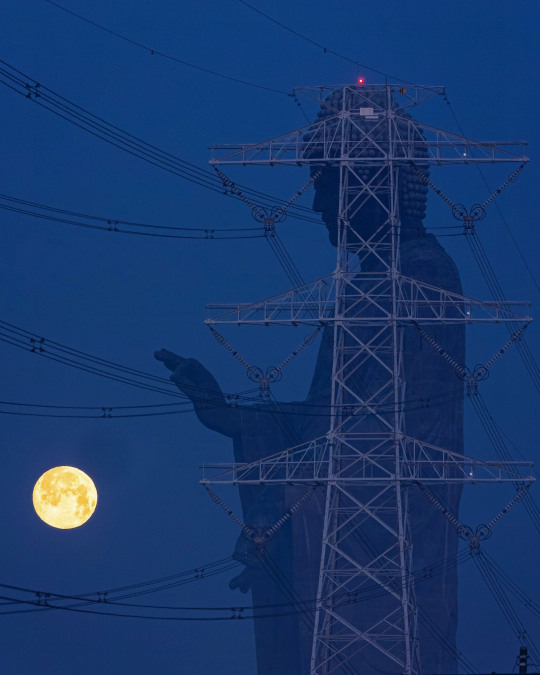
Ushiku Daibutsu, Japan. Photography by Yuya.M
@yuyar33
5K notes
·
View notes
Text
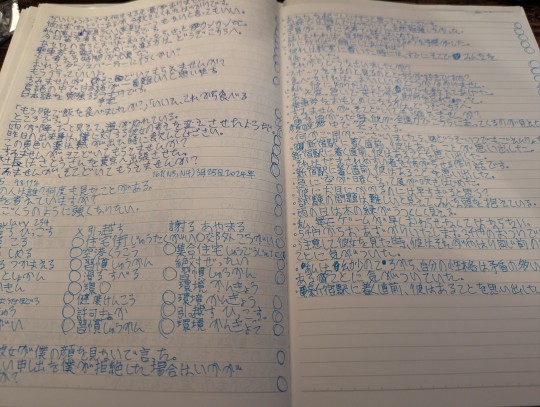
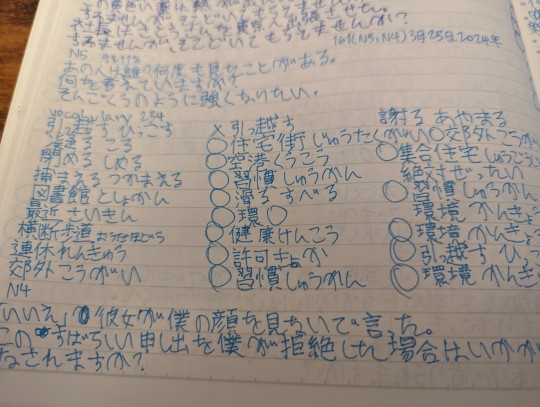
Yesterday's vocabulary and n4 sentences. The more comfortable I get with writing, the worse my handwriting gets.
17 notes
·
View notes
Text
Then Mifuné suddenly smiles. Not laughs. Smiles. The smile is something else. His face lights up, his gaze returns. He looks at you as though he sees you and is amused — by you, by himself, by life.
Happy Birthday Toshiro Mifune!
[April 1, 1920 - December 24, 1997]
298 notes
·
View notes
Text
for april fools we’re deleting this entire site sayonara you weeaboo shits
1M notes
·
View notes
Text
It's that time of year when Tumblr celebrates Easter by posting pictures of crucified anime characters, and inevitably somebody in the notes will pop up to helpfully explain that crucifixion imagery has no cultural significance in Japanese media because Japan is only about 1% Christian, which bugs me because it's completely wrong.
It's true that in the majority of cases, crucifixion in Japanese cartoons isn't meant to be conveying any specific theological message, but something Western audiences are likely to miss is that a large portion of those random crucifixion scenes are referencing Ultraman.
Ultraman's creator was a devout Roman Catholic who explicitly intended the titular hero to read as a Christ figure, and consequently, various Ultramen have been crucified on multiple unconnected occasions throughout the franchise's history. Crucifixion scenes in Japanese cartoons are often directly name-checking particular crucifixion incidents from Ultraman, right down to emulating the compositions and camera angles of specific shots. It's like an especially morbid version of the Akira slide.
The upshot is that while it's true that the inclusion of gratuitous crucifixion scenes in Japanese cartoons typically has no (intentional) theological message, stating that they have no cultural significance is incorrect. A large chunk of the Japanese viewing audience are going to see them and immediately go "hey, that's an Ultraman reference".
Anyway, as an image tax, have a shot of four crucified Ultramen miraculously resurrecting a fifth Ultraman by shooting laser beams out of their hearts:
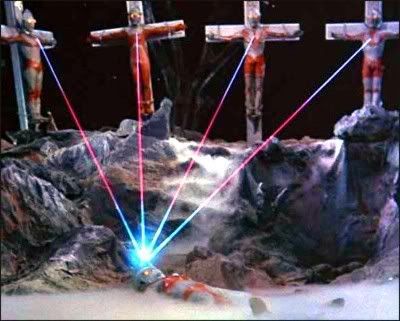
22K notes
·
View notes


